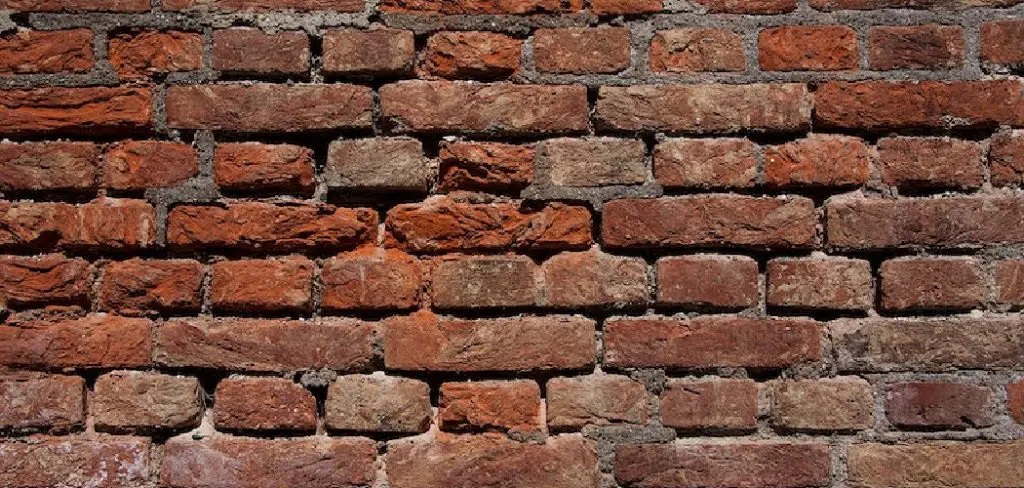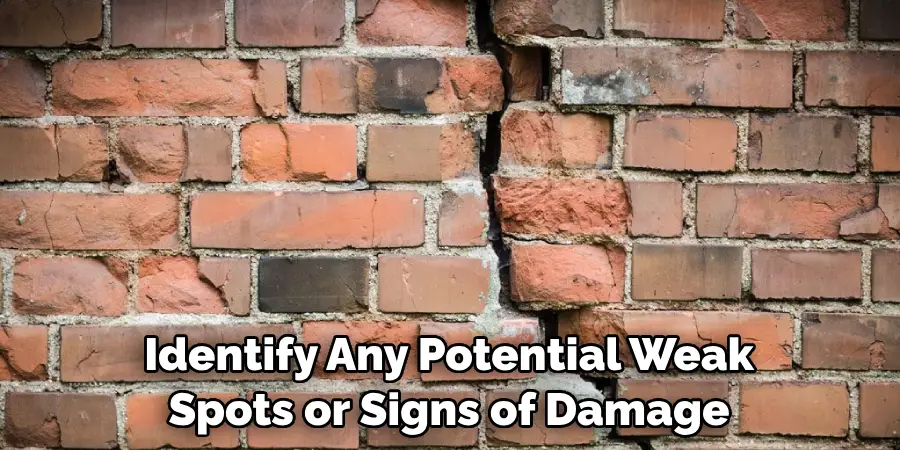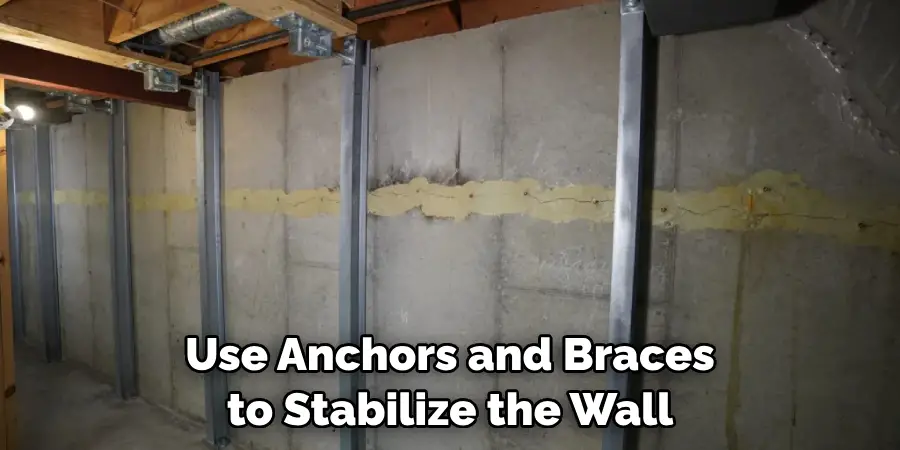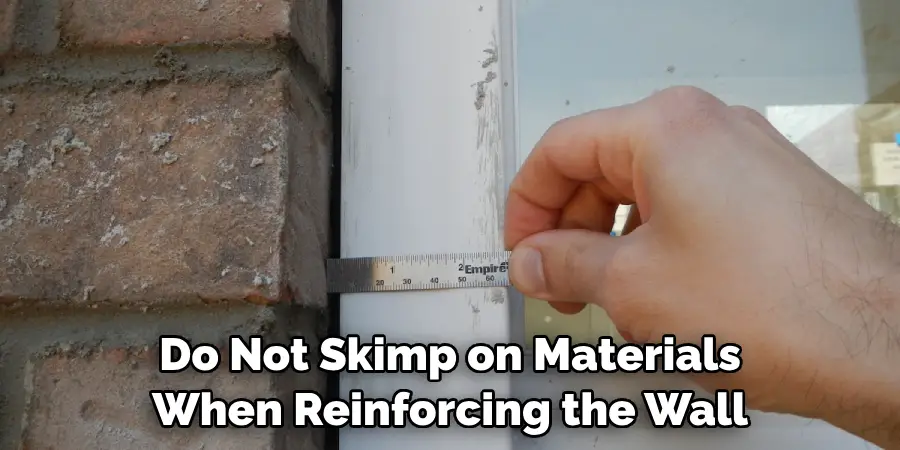Brick walls are a unique and eye-catching way to spruce up any home, garden, or patio. They provide an interesting contrast for many other elements in the space, allowing you to create beautiful designs. And if built correctly, these imposing structures can remain sturdy for decades!

However, sometimes due to various factors – such as poor design or construction methods – brick walls may appear unstable and even have a risk of falling over. That’s why knowing how to stop your brick wall from toppling is important in keeping its integrity intact while also protecting yourself and others from harm.
In this blog post, we’ll discuss the steps about how to stop a brick wall from falling over so that you can ensure it stays rigidly upright into the future!
Why Do Brick Walls Fall Over?
There are a few reasons why brick walls can succumb to the forces of gravity and begin leaning or toppling over. Poor design, construction, and structure are all common causes of a possible collapse.
For instance, a wall that’s not reinforced with steel bars or ties won’t be able to bear its own weight as it begins to lean. This type of instability allows for its gradual collapse until the wall is completely flat on the ground.
Similarly, a wall that’s not built properly – such as with mortar too soft or weak – can cause issues with stability and may eventually lead to its downfall.
Other causes of brick wall failure include:
- Poor drainage or lack of proper waterproofing
- Inadequate foundation support
- Excessive weight on the wall (such as leaning against it too hard)
What Will You Need?
You’ll need some key supplies if you’re trying to stop your brick wall from falling over. These include:
- Sandbags or concrete blocks
- Shovels for digging and leveling
- Steel bars or ties for reinforcing the wall
- A hammer drill with masonry drill bits (for anchoring steel reinforcements)
- Cement and mortar (for patching any damage to the wall)
Once you have these items, you’re ready to begin the process of stabilizing your brick wall!
10 Easy Steps on How to Stop a Brick Wall From Falling Over
Step 1. Examine the Wall
Take a close look at the structure and make sure to identify any potential weak spots or signs of damage. Make a note of any areas that may need extra support or reinforcement. If you notice any loose bricks or crumbling mortar, make sure to repair it before proceeding.

Step 2. Install Steel Reinforcements
Attach steel bars and ties at intervals along the wall using a hammer drill to reinforce it. Make sure they’re securely anchored into the ground with masonry drill bits. Try to avoid putting these reinforcements too close together, as this may cause the wall to lean or collapse.
Step 3. Dig Around the Base of the Wall
Dig a trench around the foundation of your wall about 8-10 inches deep so that you can add sandbags or concrete blocks for extra stability and weight bearing capability. You can use a shovel or post-hole digger for this part. As you dig, try to keep the trench level so that the blocks or bags can be stacked evenly.
Step 4. Fill the Trench with Sandbags
Once the trench is dug, fill it with either sandbags or concrete blocks. This will help to redistribute the weight of the brick wall and keep it in place. Don’t forget to leave room between the bags or blocks so that you can add mortar in the next step.
Step 5. Level Out the Soil Around the Base
Using a shovel, level out any uneven patches of soil around the base of the wall to provide more stability. It will also help to have a level surface for the sandbags or blocks that support the wall. Just make sure that it’s not too soft or wet, as this can lead to instability in the future.

Step 6. Fill in the Gaps with Mortar
Fill any gaps between the sandbags or blocks with mortar to create a more solid foundation. This will help to bind everything together and provide more stability for the wall.
Step 7. Install Waterproofing
To protect your brick wall from water damage, apply waterproofing material around its entire foundation. This will help keep moisture out and prevent any further weakening of the structure. Additionally, you can add a drain pipe to the foundation to help drain any excess water.
Step 8. Check Your Work
Once the waterproofing has been applied, take a step back and examine your work. Ensure all supports are level and secure before moving on to the next step. Be careful not to rush this part, as a weak foundation can lead to the wall falling over.
Step 9. Secure Loose Bricks or Masonry
If you notice any loose bricks or masonry, secure them with mortar before proceeding any further. This will ensure greater strength and stability for your wall in the long run. Additionally, you can add additional bracing to the wall if necessary.
Step 10. Monitor Your Wall Regularly
To ensure that your brick wall stays in place, it’s important to perform regular inspections and maintenance. This includes checking for any signs of damage or instability and ensuring that all waterproofing material is still intact. Remember, the earlier you catch any potential problems, the easier they will be to fix.
Following these easy steps can help keep your brick wall from falling over. Remember always to take safety precautions while working with heavy materials and seek professional assistance if necessary.
5 Additional Tips and Tricks
1. Check the wall for structural damage. This can include cracks, bulges, or other signs of deterioration. If any of these are apparent, they will need to be repaired before attempting to stop the wall from falling over.
2. Use anchors and braces to stabilize the wall and provide additional support. These should be placed in several places throughout the length of the wall, depending on their size and weight.

3. Cover the soil around the base of the wall with gravel or stones to provide an even foundation and reduce pressure on weaker points in the structure.
4. Install a footing at least 8 inches below grade that is wide enough so it is twice as wide as your wall’s height (for example, if your wall is 8 inches tall, the footing should be at least 16 inches wide).
5. Attach galvanized steel straps to the sides of the wall and secure them in place with concrete anchors. This will help to reinforce weak points and act as an additional support structure.
By following these steps, you can ensure that the wall stays upright and does not tilt or fall over. It is important to regularly inspect a brick wall for any signs of instability and take preventative measures if necessary. If you are unsure about anything related to how to stop a brick wall from falling over, consult a professional contractor who can give you more specific advice on how best to proceed with repairs or maintenance.
6 Things You Should Avoid
1. Do not attempt to reinforce the wall without a proper assessment and plan. This could be dangerous as it may cause more damage than good.
2. Do not ignore signs of structural damage, such as cracks, bulges, or other signs of deterioration.
3. Do not use nails or screws to secure the wall; these will provide minimal support and will likely come loose over time.
4. Do not skimp on materials when reinforcing the wall; using insufficiently strong materials can result in further collapse due to overloading or weak points in the structure.

5. Do not use cheap alternative materials such as wood for reinforcement; they should only be used for aesthetic purposes and are unlikely to provide adequate support.
6. Do not overburden the wall with heavy items such as furniture or other large objects; this can strain the structure and lead to collapse.
By avoiding these mistakes, you can ensure that your brick wall stays standing and does not collapse. With the right preparation and reinforcement, a brick wall can be made to last for many years.
Conclusion
As we have discussed, there are various ways to secure a brick wall and prevent it from toppling over. The choice of anchors, adhesives, stabilization methods, and other preventative measures is yours to make.
It’s important to remember that you should check regularly for any signs of damage and follow your chosen method of stabilization diligently for maximum effectiveness.
Overall, taking the precautionary steps necessary to hold the structure together will go a long way in preventing accidents or costly repairs in the future. Creating a unique stabilizing craft item can add a touch of personalization while accentuating its stability!
So take the necessary steps today to preserve your brick wall’s integrity tomorrow – safety first! Hopefully, the article on how to stop a brick wall from falling over has been helpful. Good luck in your future endeavors!
